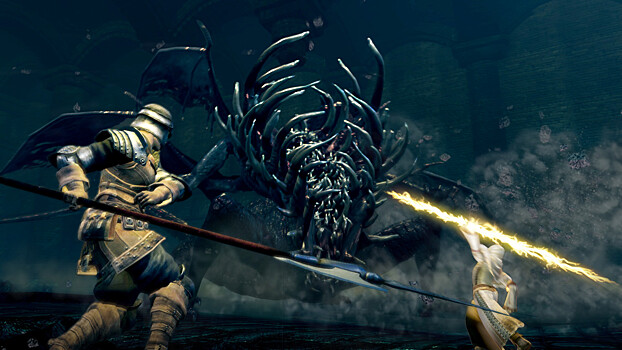What causes male migraines?
What causes male migraines? The reasons for male patients experiencing migraines include psychological factors, improper diet, circulatory system diseases, and neurological diseases. If the symptoms of migraines persist without relief or are severe, timely medical treatment should be sought. 1. Psychological factors: If the body is under long-term mental stress, experiencing anxiety, poor sleep quality, etc., it can lead to endocrine abnormalities, causing the release of vasoactive peptides around blood vessels, leading to dilation of intracranial blood vessels and a decrease in the inhibition of central pain transmission, resulting in symptoms of migraines in men.
2. Improper diet: If the body frequently consumes chocolate, alcoholic beverages, coffee, as well as preserved meats, pickled vegetables, and other foods containing monosodium glutamate, aspartame, and other food additives, it can also cause migraines. For example, coffee contains caffeine, and excessive consumption can increase the excitability of the cerebral cortex, increase neurotransmitter transmission, cause excessive cerebral vascular spasm, and induce migraines in men.
3. Circulatory system diseases: If there are circulatory system diseases such as hyperlipidemia, hypertension, and cerebral arteriosclerosis, migraines symptoms may also occur. For example, hyperlipidemia can increase blood viscosity, leading to slow blood flow, insufficient cerebral blood supply, and migraines in men.
What are the causes of men's migraines? No matter what you eat, you must take the appropriate treatment! (Zhengtian Pill) Main functions: dispersing wind and clearing blood, promoting meridian circulation and relieving pain, used for headaches caused by external wind pathogens and blood stasis blocking meridians; neurogenic headaches, migraines, etc. Dosage and usage: after meals, one sachet three times a day. Every 4 to 6 hours once. Migraines, also known as vascular headaches, have been known for over two thousand years in medical history. Migraines are a very tormenting disease, with pain usually localized on one side of the head, but can also occur on both sides. The pain is usually in the temporal region, extending to the forehead or top of the head, and has a certain degree of radiation. It can occur a few times a year, a few times a month, or once every few days, with a duration of several hours (typical migraines) or several days (common migraines). The initial symptom of a migraine is pulsating headache, usually originating from above or behind one eye; it can also start from the back of the head and then extend to one side of the head. It is usually accompanied by nausea, vomiting, blurred vision, tingling and numbness in the limbs (lasting up to 18 hours). Typical migraines are preceded by aura, including visual confusion, speech impairment, weakness, and various sensory disturbances. It may also include bright sparkling lights or simple geometric shapes in the visual field. Allergies are a common cause of migraines. It includes allergic foods (such as wheat, chocolate, monosodium glutamate, sulfites [used in salads], phenylalanine and tyramine in cheese, nitrites [preservatives in hot dogs], aspirin, sugar, citric acid, fermented foods [cheese, yogurt], alcohol, etc.), environmental pollution; constipation, tension and stress, lack of exercise, etc., may all be potential factors causing migraines, and it can also be caused by poor liver function. 70% of migraine sufferers are female, and this disease usually has a familial tendency and may be related to genetics. The chemical composition of many patients' brains is abnormal, leading to excessive dilation or constriction of cerebral blood vessels. Here are common types of migraines: 1: Cluster headaches: only last for about an hour, but can be extremely painful. The pain is usually concentrated around one eye, causing redness and tearing in the eye. It is called cluster headache because it usually occurs intensively day after day and then disappears for several months. It does not have the common photophobia or visual abnormalities associated with migraines. General migraines disappear during sleep, but if it is a cluster headache, sleep is not helpful. 2: Temporal arteritis: it is a pulsating headache occurring on one side, caused by inflammation of the arteries on the side of the head. You may find yourself easily fatigued or mentally unwell, and you may feel muscle and joint pain. You can do a blood test called sedimentation rate. If the result is very high, you may need corticosteroids to prevent serious complications such as blindness. 3: Vascular abnormalities: will cause headaches that persist on one side of the head, and the difference between headaches caused by vascular abnormalities and migraines is that migraines will at least occur on one side of your head; while cluster headaches often switch sides each time they occur; these headaches generally do not have the neurological symptoms commonly seen in vascular abnormalities. 4: Menstrual migraines: during a woman's monthly menstrual cycle, the levels of female hormones in the blood fluctuate like a roller coaster, sometimes high and sometimes low. Before the onset of menstruation, the hormone levels suddenly decrease, and about half of women will experience migraines at this time. Just like cutting off caffeine can cause headaches, a sudden decrease can have the same effect.
What are the causes of male migraines? I suggest you check your cervical spine. If there is pain on both sides of the cervical spine, it is caused by cervical misalignment leading to migraines. For example, if the cervical spine is misaligned to the right, the right side of the cervical spine will be painful, and the right side of the head will also be painful. If the cervical spine is misaligned to the left, the left side of the cervical spine will be painful, and the left side of the head will have a headache. There may also be pain in areas such as the posterior ear nerve, top of the head, temples, forehead, and nasal cavity. Of course, it doesn't mean that all of these areas will hurt immediately, but the pain will gradually develop and spread to all areas. Some doctors may not be able to determine the cause and often conclude that it is "neurological migraines, wind pain, trigeminal neuralgia," and other diseases. In fact, this type of headache does not require medication, as long as the misalignment is corrected, the headache symptoms will immediately disappear. Headaches, dizziness, and neck pain are caused by the misalignment of your cervical spine. The treatment is very simple. How to treat cervical spine pain? I will tell you the method: use your thumb to press down on the painful points of the cervical spine. If there is pain on the right side of the cervical spine, push and press towards the left shoulder, and vice versa, push and press towards the right shoulder until the cervical spine no longer hurts. At this time, the pressure should be maintained steadily for 10 to 20 seconds until the pain and swelling immediately disappear. The force of the pressure gradually increases from light to heavy, up to a maximum of 5 kg, and should not be forcibly pushed with excessive force. Gradually increase the force until the cervical spine no longer hurts, the head is no longer dizzy, and the eyes can see clearly. Your cervical spine problem will be cured. The method is simple, practical, safe, and reliable. This method is not suitable for severe osteoporosis and cervical spine problems caused by trauma. After performing the realignment, you should immediately do a test: the cervical spine should be able to freely rotate without any sound or pain, and the head should not hurt or be dizzy. This indicates that the realignment was successful. If there is difficulty in rotating, it means that it has not been properly realigned, and you should continue to push and press until the cervical spine can rotate freely.
What is the cause of migraines? Migraines are usually caused by abnormal dilation and contraction of blood vessels. Most patients have migraines due to poor daily habits, excessive mental stress, lack of sleep, staying up late, excessive smoking or drinking, or catching a cold and getting a chill in the head. Some patients have migraines caused by endocrine disorders, which require targeted improvement in endocrine problems. Some patients have migraines that are hereditary, and there is also a portion of patients whose migraines are caused by cervical spine diseases or cerebrovascular diseases. If the headache is particularly severe, one should go to a regular hospital for detailed examination and receive targeted treatment after determining the cause. Common symptoms include severe headache, dizziness, nausea, vomiting, and blurred vision. Migraines can be treated with Zhengtian pills, Anshen Buning liquid, acupuncture, massage, physical therapy, hot compress, moxibustion, and other methods. Common treatment methods include: first, taking oral medications such as Xuefu Zhuyu Wan oral liquid, Sumatriptan, Nimodipine, compound deer horn particles, etc.; second, using acupuncture and massage methods for treatment; third, avoiding eating spicy and irritating foods, and avoiding smoking and drinking; fourth, maintaining regular daily routines and not being overly stressed.
What causes male migraines? Let's end the introduction here. Thank you for taking the time to read the content on this website. Don't forget to search for more information about the causes of male migraines on this website.





Leave a Reply